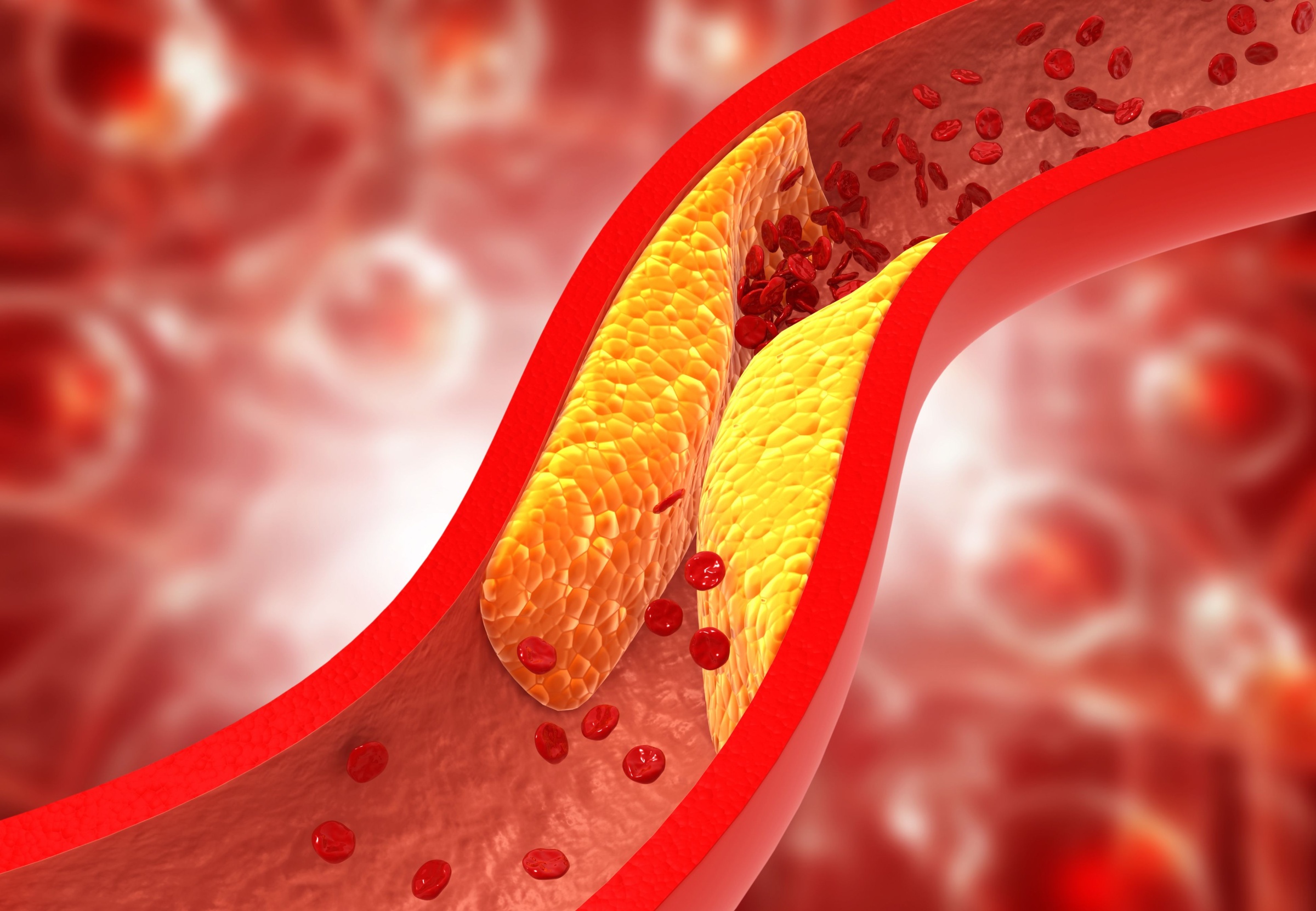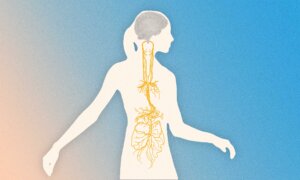Strokes and heart attacks are intimately linked to cholesterol. That’s why a major strategy of modern medicine is aimed at cholesterol reduction.
But some doctors say cholesterol isn’t as deadly as we’ve been led to believe.
One of the individuals challenging the cholesterol status quo is Dayan Goodenowe. A neuroscientist and biochemical researcher, Mr. Goodenowe is known for his diagnostic prevention and treatment systems across various diseases.
On The Epoch Times health program, Vital Signs, Mr. Goodenowe stated that our fear of cholesterol has become an unhealthy and misguided obsession.
“It’s not based on logic or simple facts,” he said.
Vital to our health and well-being, cholesterol is a waxy lipid found throughout the body. Cholesterol is an essential ingredient of many hormones, contributes to general tissue repair, and helps provide structure to all the membranes in the body. HDL (high-density lipoprotein) is particularly important, often called “good cholesterol.” Research shows that higher levels of HDL cholesterol can lower your risk for heart disease and stroke.
Total cholesterol is a figure which adds LDL and HDL, plus the fat in your blood. The prevailing wisdom in modern medicine is that the higher your total cholesterol level, the greater your risk of stroke and heart disease. According to the American Heart Association, the optimal total cholesterol level people should aim for is a concentration of about 150 milligrams per deciliter of blood.
Health experts agree that some cholesterol is necessary for good health. The big concern is that we may carry too much. Of particular concern is the so-called “bad cholesterol” or low-density lipoprotein (LDL). That’s because LDL plays a role in atherosclerosis—a medical term for hardening of the arteries.
The Anatomy of an Artery
To understand how atherosclerosis occurs, consider the design of an artery. It’s like a hose made up of several concentric layers. The innermost layer, the one that’s right next to the blood flow, is called the endothelial layer. It is made of tightly packed cells that work to prevent leaks in the pipeline.
“What happens in atherosclerosis is what’s called endothelial dysfunction,” Mr. Goodenowe said. “The tightness of those cells becomes disrupted, and they become leaky.”
A weak endothelial layer permits material from your blood supply to leak into the walls of your arteries, creating inflammation and plaque formation as a consequence, Mr. Goodenowe said. Over time, the opening in the arterial hose narrows, blood flow becomes restricted, and blood pressure rises. Eventually, when the bloodstream gets completely blocked, a heart attack or stroke can occur.
When it comes to the materials that leak into arteries with a weak endothelial layer, LDL definitely contributes to arterial blockage. That is why doctors work to minimize cholesterol in an effort to combat heart disease and stroke.
However, Mr. Goodenowe points to endothelial dysfunction as a result of oxidative stress as the root cause of heart disease. He says cholesterol is merely a symptom of the underlying problem.
“Cholesterol has zero to do with endothelial dysfunction,” he said.
Our liver manufactures most of the cholesterol our body uses, but we can get more from cholesterol-rich foods. If dietary changes aren’t enough to reduce a patient’s cholesterol level to the target 150 threshold, statin drugs are routinely prescribed to lower the number.
However, Mr. Goodenowe points to studies showing that cholesterol concentrations that are too low also suggest health problems. A prospective cohort study in a 2019 edition of the journal Scientific Reports, found that among 12.8 million adults, actual sweet spot of total cholesterol is between 210 and 249—about 100 points above what most doctors consider ideal.
“When you run an analysis for cholesterol—and this is done in over 160 countries—virtually every single time it’s ever performed, it comes back with the optimal level of cholesterol for the people who have the lowest mortality,” Mr. Goodenowe said.
This is not to say that high cholesterol means better health. Research shows that as cholesterol levels rise into concentrations of 300 and 400 milligrams per deciliter, all cause mortality increases. However, as total cholesterol levels dip below 200, all cause mortality also rises.
The Rise of Statins
According to a 2019 study published in Cell, for close to a century, medical science has demonstrated that LDL is the instigator of atherosclerotic plaques leading to heart disease. By the 1930s, researchers recognized that elevated cholesterol levels were associated with a 20-fold increase in the incidence of heart attacks in middle age, the study says.
The most celebrated tools in the fight to lower cholesterol are medications known as statins—the most commonly prescribed class of drugs in America.
The search for cholesterol lowering drugs stretches back to the 1950s. In the 1980s, the U.S. Food and Drug Administration approved the first statin. These drugs work by blocking an enzyme in the liver called hydroxymethylglutaryl-CoA reductase, which reduces the body’s ability to make cholesterol.
This statin prescribing strategy has become standard practice in modern medicine—and health experts are convinced that statins have big benefits. The U.S. Department of Health and Human Services (HHS) point to scientific studies and years of use all over the world proving that statins “reduce a person’s chances of having a heart attack or stroke; needing surgery, angioplasty, or stenting to improve blood flow in an artery; and dying from a heart attack.”
On a HHS website devoted to heart disease, the agency states that, “The higher a person’s risk of having a heart attack or stroke, the stronger the benefit of the statin. The benefit increases the longer the statin is taken. In general, taking a statin can cut a person’s risk of a heart attack or stroke in half.”
However, Mr. Goodenowe argues that the benefits of statins are not so clear. He says the initial justification for statin drugs was supported in large part by a study which showed that lowering cholesterol could improve cardiovascular outcomes in people with active cardiovascular disease.
The trial Goodenowe refers to focused exclusively on people who had an active cardiovascular disease diagnosis, but the results were applied to the general population—suggesting that anyone who lowered their cholesterol could expect better health outcomes.
“The whole world just jumped all over this because, conveniently, at the exact same time, you had all these statins being developed by Merck that in the research studies had very similar results,” Mr. Goodenowe said. “They were extrapolating people with familial hypercholesterolemia to the general population without doing any of the large epidemiological research of all cause mortality or cardiovascular mortality.”
Statistical Interpretations
The U.S. Food and Drug Administration approved the first statin, Lovastatin, in 1987. Since then, numerous statins have hit the market, producing what has become one of the pharmaceutical industry’s most successful drugs.
Doctors and patients have relied on statins for nearly 40 years. However, Mr. Goodenowe believes the drug’s success is more due to sleight of hand than actual efficacy.
For example, the all-cause mortality studies mentioned earlier showed that people with cholesterol levels between 210 and 250 had the best health outcomes. Now, imagine a group of these people in this 210 to 250 range who are put on statins to reduce their cholesterol down to 150, and compare them to another group of people who naturally have a cholesterol level at about 150 without the drug.
Although on paper both groups have the same numbers, those with naturally higher cholesterol (the statin group), always come out on top. When you compare both groups, patients in the statin group consistently have less mortality and show signs of better cardiovascular health.
“They use this information to promote statins as positive,” Mr. Goodenowe said. “The problem is the person who has cholesterol at 150 while on a statin didn’t start at 150. They were actually a 220 person who is now at 150 [because of the drug].”
Statin Effects
Whether or not the benefits of statins are overblown, they clearly have an impact on the body—and some evidence suggests they may do more harm than good.
Statins are mitochondrial inhibitors, meaning they can impact your cellular energy production, and potentially cause health problems. Studies have shown that “Statins have several effects on mitochondria including reduction of coenzyme Q10, inhibition of respiratory chain complexes, induction of mitochondrial apoptosis, dysregulation of Ca2+ [calcium] metabolism, and carnitine palmitoyltransferase‐2 expression.”
The use of statins has been associated with the onset of diabetes and dementia as a result of interference with mitochondrial pathways. Common side effects of statins include headache, muscle pain and weakness (myopathy), fatigue, digestive problems, and sleep issues.
For those taking statins, Mr. Goodenowe recommends a few supplements to reduce the negative effects of the drug, such as B-vitamins. However, he says the most important supplement is Coenzyme Q10.
“That’s been studied the most extensively with statin use as neutralizing its myopathy outcomes,” Mr. Goodenowe said.
Other supplements include N-acetyl-cysteine, and acetyl L-carnitine, which Mr. Goodenowe calls “mitochondrial support molecules.”
In addition to lowering cholesterol levels, statins can also reduce triglycerides—another lipid linked to heart disease.
However, Mr. Goodenowe says there are more natural ways to reduce triglyceride levels than a statin.
One method he suggests is time restricted eating, also known as intermittent fasting—a practice of reducing the number of hours a day in which you consume food.
Resistance training, like weightlifting or other activities that build and maintain muscle mass, can also help. According to Mr. Goodenowe, resistance training leads to lower triglycerides because the fatty acids that are being sent out are balanced.
“They’re calibrated with the energy utilization of your body,” Mr. Goodenowe said.
Whether you decide to take a statin or not, Mr. Goodenowe stresses that we shouldn’t continue to demonize cholesterol. It serves several functions, and is even an indicator of good health.
“Cholesterol is a molecule that your body must make from scratch. We clearly can articulate what the optimal cholesterol levels are, because the optimal levels will be the levels that give us the best health and vitality and survival,” Mr. Goodenowe said. “So that means if you can’t make that much something is dragging you down. There’s a reason that you’re under some sort of stress.”









